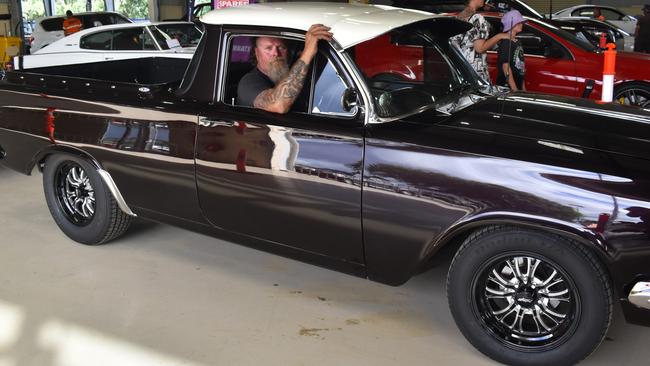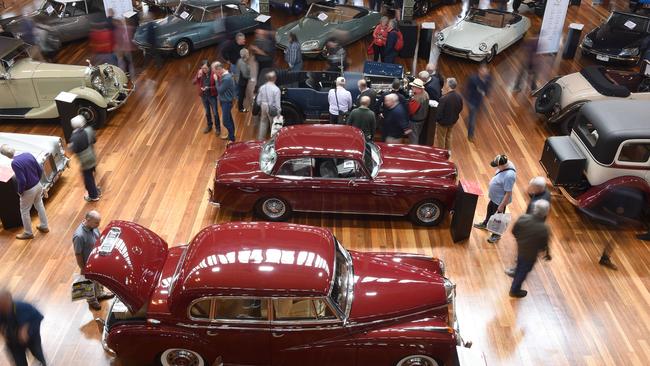EVs versus collectable cars and why investing for monetary gain may not be such a good idea
Older Australians are keeping the classic car market motoring but the buyers are getting very selective, and the growth of EV and potential of hydrogen vehicles could undermine their value.

As the cost of living soars, you would assume the market for collectable cars is in free fall. After all, economic growth is slowing and some experts predict a recession in 2025.
Certainly, the impact of rising interest rates is starting to hit home for mortgage holders who have been cutting back on spending.
But something interesting is happening. A segment of the collectable car market is going through a purple patch and classic car dealers cannot find vehicles quick enough to feed the market of cashed up buyers.
Ben Finnis, managing director of South Australia-based Collectable Classic Cars – one of the largest classic car dealers in the country – says: “Although the mood on the street is doom and gloom with the talk of recession, rising interest rates have been great for retirees who generate part of their retirement income from term deposits.
“Some of these people have never been better off.”
Finnis is selling at least a car a day and says that business is even better now compared with Covid-19 times when people bought cars to travel domestically as travel bans were in place.
In addition to rising term deposit income, retirees have seen the value of their superannuation fund grow with share markets producing strong returns for the past 12 months.
In terms of what cars retirees are buying, just like most collectable car owners there tends to be an emotional connection to the formative years. Maybe the car was a poster on the wall as a teenager, maybe the cool uncle owned the car or maybe it was a car which was always beyond their means but now they are in a position to buy it.
“Cars built in the 1960s and 1970s are what retirees are snapping up. Australian classics such as Holden are doing very well but also English cars such MG and Austin-Healey are in demand and the typical budget tends to be up to $50,000,” Finnis says.

For $30,000 you can get a mint condition 1963 Holden EJ Special and for even less you can get an early ’60s convertible Triumph Spitfire.
However, it is not all good news for collectable car owners.
Although the cars that retirees are buying are rising in value, late model collectable cars are in decline.
“During Covid people aged between 40 and 60 bought collectable cars built from the 1980s onwards as investments,” Finnis says.
“But now, with the cost-of-living pressure, some of these people are in a financial mess and are trying to get rid of these cars, which is impacting resale values in this segment.”
Whether cars are good investments or not, Finnis is not a fan of owning cars in super funds.
“Super funds are governed by strict rules around the usage of collectable cars and as such, cars owned in super funds tend to spend most of their lives locked up in dark garages,” he says. “But cars need to be driven and used to retain their good working condition.”
If you are thinking about purchasing a car as an investment, it can be a tough market to make the appropriate purchase. Although cars from the 1960s and 1970s are currently selling like hot cakes, in 10 years’ time prices may come down as the people who bought them today start to get to the age where they no longer drive cars and begin to sell.
At the same time, the next generation of collectors will prefer cars from their childhood and that means cars from 1990 onwards may boom.
Although EV sales are trending down at present, Finnis sees both EVs and hydrogen vehicles as a threat to the collectable car industry.
When questioned on why this might be the case given that less supply of combustion-engine vehicles logically equates to more demand and higher prices, he says: “There are a lot of questions marks in the future as battery and hydrogen-powered vehicles become the norm.
“The government may introduce an annual tax per engine cylinder or they may increase the excise on fuel. And fuel generally may be harder to source.”
Overall, buying a collectable car makes sense if you have a passion for it. Take the car on weekend drives and enjoy every moment of owning it.
But if your sole motivation is to make a profit, the advice is to steer clear of cars as there are uncertainties that can make it a difficult exercise.
Demand is fickle and can change with the preferences of buyers and changes to economic conditions – both of which can occur rapidly and result in large swings in collectable car values.
James Gerrard is principal and director of planning firm www.financialadvisor.com.au



To join the conversation, please log in. Don't have an account? Register
Join the conversation, you are commenting as Logout